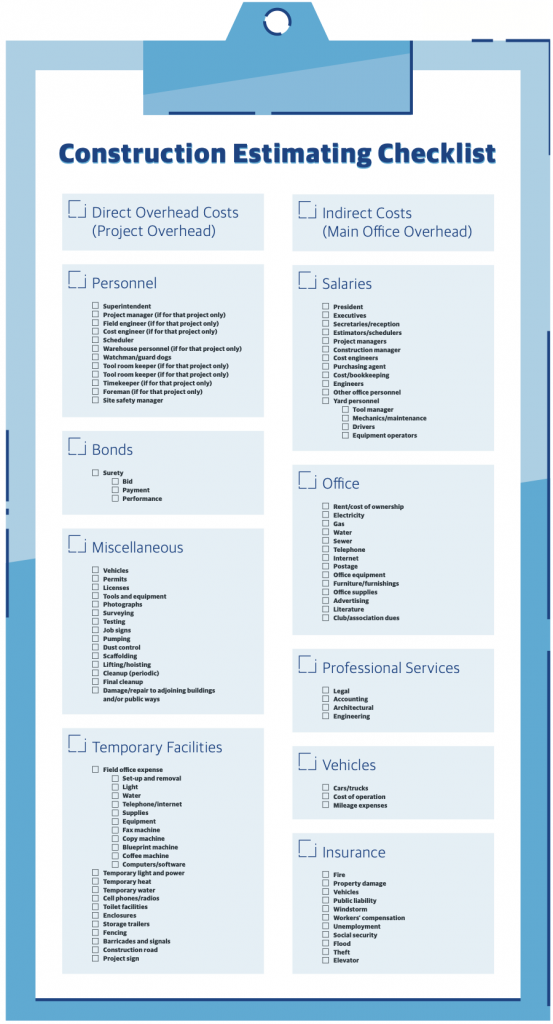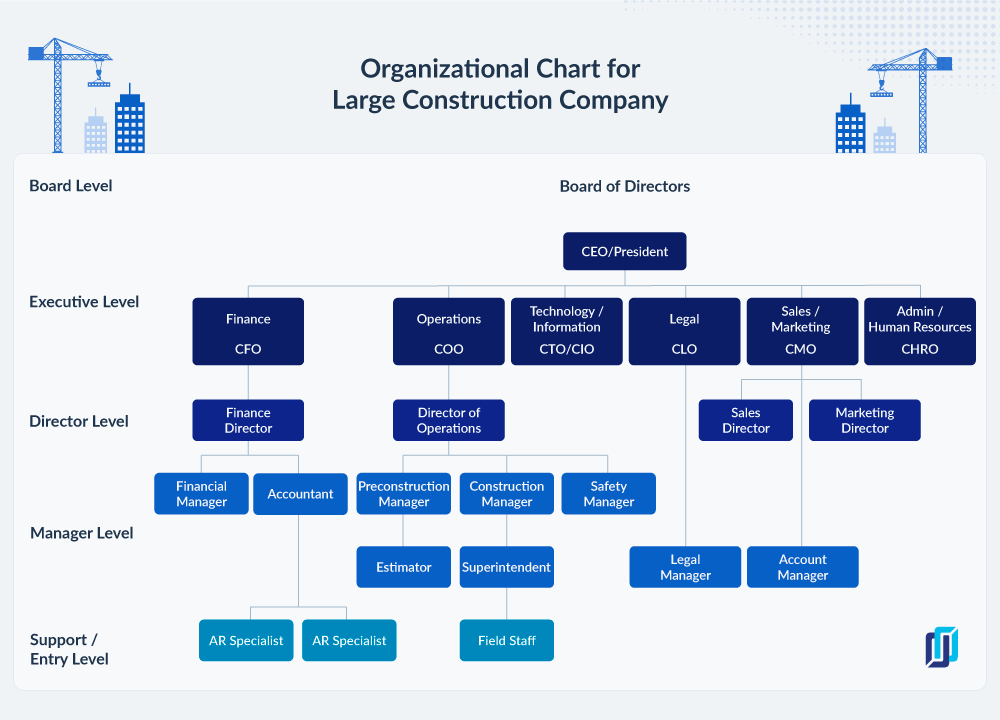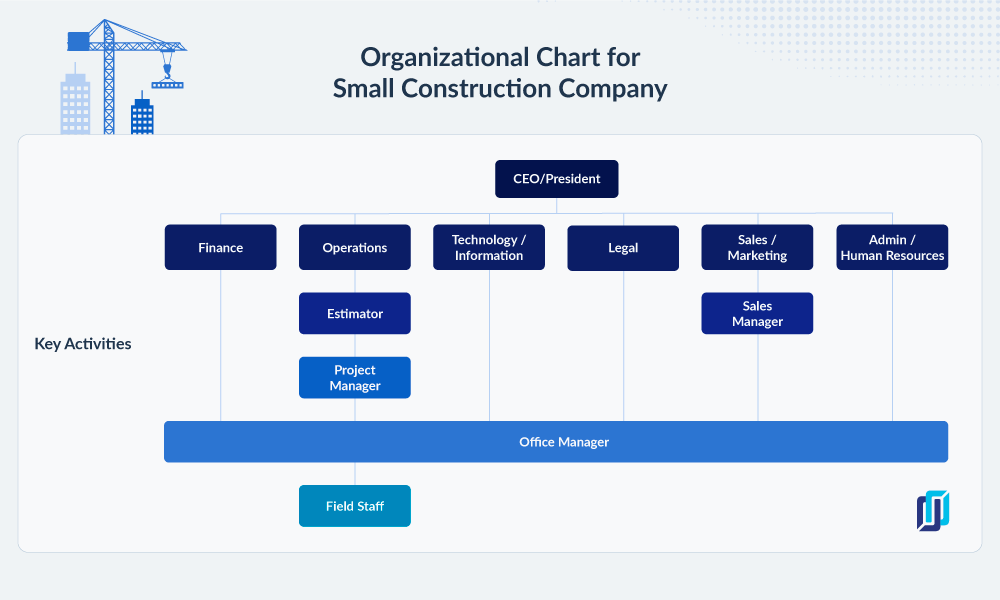12 General Conditions and Project Staffing
Learning Objectives
After reading this chapter, you should be able to:
- Define the elements contained within general conditions for a project.
- Understand the typical organizational structure and job tasks of different participants on a project.
- Be able to define and draw a typical organizational structure for a construction firm, and understand how it differs from typical manufacturing or service organizations.
Introduction
When developing a detailed estimate of costs, the team needs to plan for the project-related general conditions costs as well as the home office overhead costs. These costs do not directly contribute to the final facility, but they are necessary to manage the delivery of a project and ensure that the site is safe and secure. General Conditions will vary on a project based upon the size of the project, project complexity, site constraints, duration of the project, cost of management staff, as well as many other factors. These costs can be separated into the Direct Overhead (specific to a project) and Indirect Overhead (related to home office expenses). Gordian has developed a checklist for the costs in each of these two categories (see Figure 1 with project overhead on the left and home office overhead on the right).

The remainder of this chapter will focus on Direct Overhead costs, which are specific to the project. These project-related costs are typically referred to as the ‘general conditions’ costs. General Conditions include the costs related to complying with the General Requirements for a project which are frequently outlined within a ‘General Requirements’ section of a contract. The minimum General Requirements are typically included in the Specification Section 01 within the Technical Specifications and may also be defined within a separate contract document. To identify a cost for many of these items, an estimator can reference the CSI MasterFormat Section 01 within the Building Construction Cost Estimate Guide with RS Means Data. Examples of items within the division include project management time, field supervision time, construction trailers, and jobsite fencing.
Construction Company Structure
There are many people engaged in the design and construction of a capital facility project. When we look at the tasks that are typically performed by a construction organization, we see a number of core functions, with examples including estimating, scheduling, safety management, accounting, business development, and operations. These functions can be organized in different ways within a construction company. For smaller companies, a single person may perform multiple functions, e.g., estimating and accounting. In larger companies, a function may be performed by a department within the organization, or possibly even multiple geographically located departments, e.g. an estimating department in Washington DC and an estimating department in New York. Figure 2 shows a typical organizational chart for a larger construction company, while Figure 3 shows a typical organizational chart for a smaller company.


Preconstruction Services
Preconstruction services are tasks performed by a constructor prior to the start of construction, primarily in more integrative delivery approaches such as design-build, CM agency or CM at risk. These services aim to support the project owner or designer(s) by performing construction planning and other tasks to advance the project. For example, these services can include the development a construction cost estimates and budgets, design reviews, development of detailed site logistics, assistance with permitting, development of construction schedules and phasing plans, identification and potential purchasing of long lead items, support with public relations, and assistance with the development of bid packages, along with other potential tasks.
Operations
Some companies refer to the staff members that are responsible for the planning and delivery of a facility as the ‘Operations’ function (or department) within the company. The Operations group will typically have project executives, who manage the overall delivery of a project, along with project management staff who manage the delivery of the project on a day-to-day basis, and the superintendent staff who develop and implement the detailed construction plans, spending time in the field to direct the work activities.
Project Management Staff
The Project Management staff is responsible for managing the overall contract for the project. These staff members are sometimes referred to as the ‘office staff’ from the perspective of the management of the project. They tend to spend most of their time in an office environment, frequently in a jobsite trailer or office, working on management and administrative tasks necessary to ensure that the field labor and supervision are provided everything they need to perform the fieldwork efficiently. This includes tasks such as:
Field Supervision Staff
The Field Supervision staff is responsible for managing the field operations and ensuring that the field operations have everything they need to succeed. While everyone on a project is responsible for safety, the field supervision staff has the added role of ensuring that there is a lead safety representative whenever there are field employees performing construction activities on the site.
Review Questions

